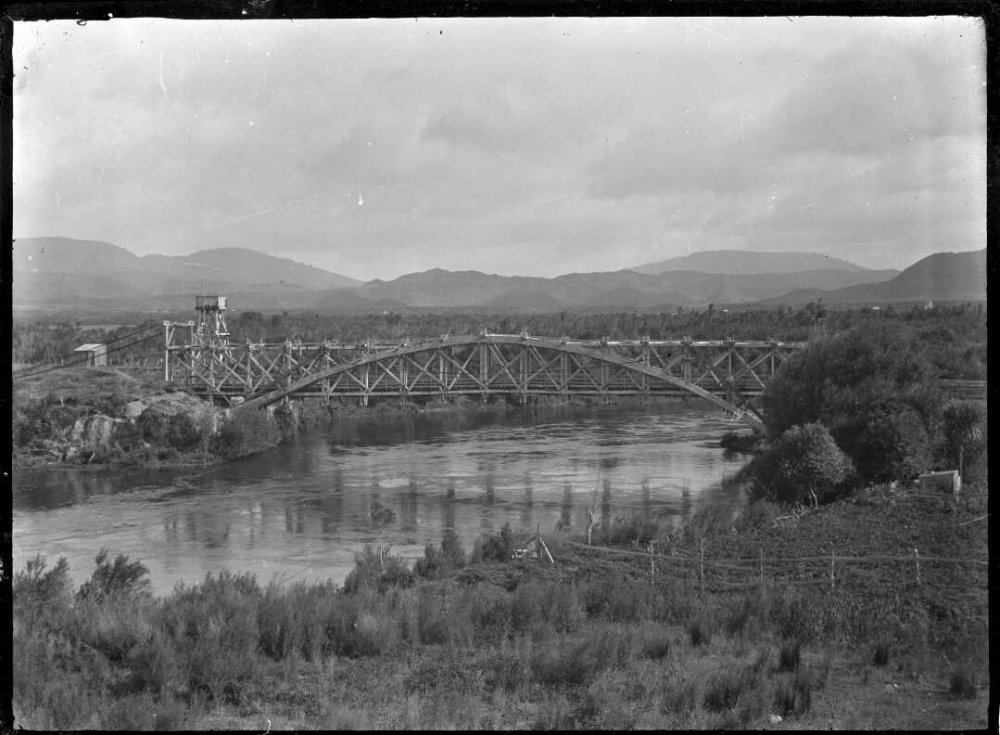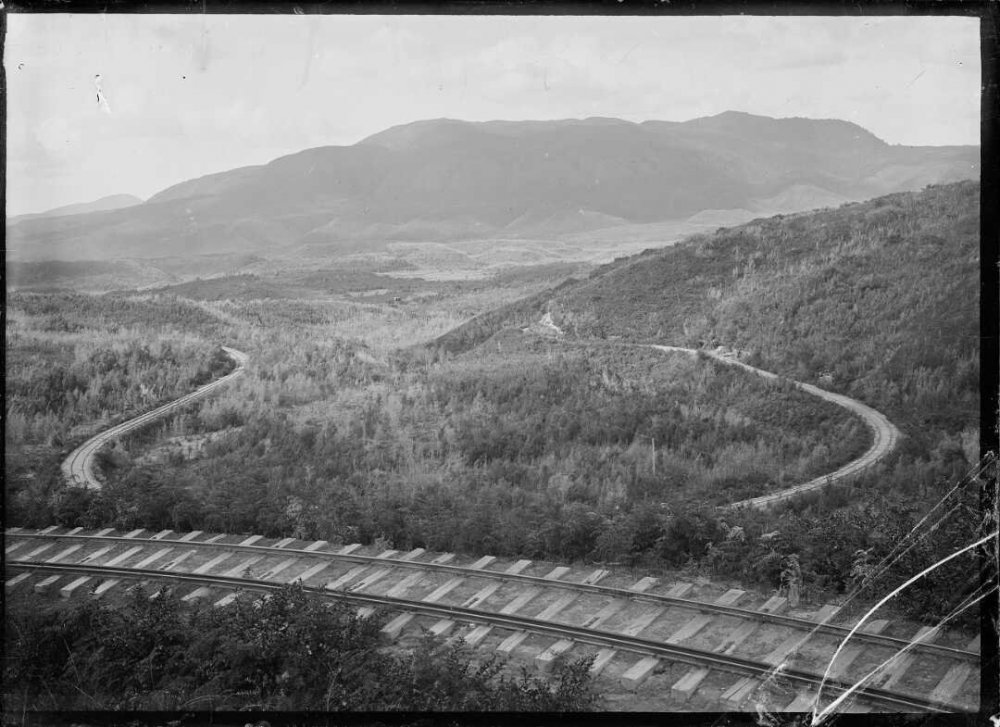-
Posts
4,875 -
Joined
-
Last visited
-
Days Won
119
Content Type
Profiles
Forums
Events
Gallery
Everything posted by Mayner
-
Tony. Great to see your determination and commitment to modelling Omagh goods yard paying off. The level of detail really brings the scene to life, I really like the view across the platform the water tower is certainly an excellent view blocker for a staged presentation.
-

Narrow Gauge in the Rockies not quite
Mayner replied to Mayner's topic in US / Canadian Railway Modelling
I was sorely tempted! That red tank car is definitely related to Thomas the Tank Engines Troublesome Trucks. Like the Ballymena Narrow Gauge we have had the odd freight car de-railing flipping over and getting lost in the shrubbery without anyone noticing until it arrived at its destination. There is a story of an ore car disappearing out of a train on the Ballymena narrow gauge somewhere between a mine and Larne without anyone noticing in NCC days, the ore car tipped over on an embankment and ending up in a field, the two parts of the train re-coupled the train crew did not notice a thing -
The Irish Model Railway Company (Herbert Richards) H van drawing showing Bulleid triangulated underframe construction. The triangulated design was intended as a cheaper/stronger alternative to conventional underframe construction. The J hanger arrangement in combination with laminated springs provides an element of dampening to allow wagons and coaches to run at higher speed without de-railing .
-
Some how or other it me of an RTE sports presenters alleged comments about the French rugby player Jean Condom. "If he is no good in the first half will they use him again in the second half."
-

Narrow Gauge in the Rockies not quite
Mayner replied to Mayner's topic in US / Canadian Railway Modelling
Something unusual: more realistic derailments or the challenges of Large Scale modelling? I sometimes run a train while I am working in the garden, after circuiting the main line several times this happened. The tank car appeared to uncouple from the rear of the train near the tree in the distance, then apparently de-railed at a facing point, partially de-railing a gondola before the train drew to a halt. The Tank Car (Bachmann Spectrum) had a tendency to rock from side to side on curves when running downgrade so further investigation was required to identify the initial point of the de-railment The red tank car initially appears to have partially de-railed on the approach to the viaduct passed trough a tunnel and the facing turnout to the wye before totally de-railing on a trailing turnout. The tank car had a greater tendency to rock from side compared to the Accucraft freight cars, which I tried to correct by fitting side bearing pads to one of the bogie, leaving the other to take up irregularities in the track which appeared to have largely eliminated the problem. The Bachmann bogie pivots on a sleeve secured to the body by a self tapping screw with a large washer, Accucraft originally used a turned bolt with a compression spring arrangement, but recently changed to a similar arrangement to Bachmann. While I initially treated the rocking as a problem with the design of the bogie/tank car, wheel profile may be a factor https://en.wikipedia.org/wiki/Hunting_oscillation although Bachmann use a similar bogie pivot arrangement for its Big Haulier range of G gauge stock hunting/oscillation is not a problem although the High Haulier coach freight car wheels are smaller dia than used with 1:20.3 stock. The next step is to inspect the tank car bogies and wheels and possibly swap wheel sets or bogies to see if it makes any difference -

Ernies Massive Irish 1930's to 2005 Photo Archive
Mayner replied to Glenderg's topic in Photos & Videos of the Prototype
The run down of Irish Railfreight during the last 16 years is mainly a result of a combination of IE implementing Irish Government transport policy and increased competition as a result of EU de-regulation. While the Irish Government is allowed to subsidies loss making public transport services, the Government is apparently not prepared to subsidies IEs freight operations due to a potential breach of EU competition regulations. One Transport Minister (round 2002-2005) is on the record that the Government is not prepared to subsidies IE to transport freight by rail because of competition legislation. CIE and Irish Cement came into existence during an era of protectionism when it was acceptable for a government to grant a monopoly to establish or protect and industry. IEs cement traffic was operating on borrowed time from the mid-late 1980's Cement Limited lost significant market share as competing cement manufacturers and importers entered the Irish cement market in the late 1980s, IE lost its near monopoly position in licensed haulage when the Irish Road Transport Industry was de-regulated during the 1990s. -

Ernies Massive Irish 1930's to 2005 Photo Archive
Mayner replied to Glenderg's topic in Photos & Videos of the Prototype
Great find the coach appears to be one of the bogie Tri-composite coaches introduced by the MGWR in 1900 still in its original condition with center luggage compartment! These coaches were re-classified as 1-3rd composites when the Midland abolished 2nd class accommodation and appear to have been originally used as "through coaches" from main line to branch line services. An ideal coach for a one coach branch line train -
In modelling Irish railway in N gauge I focused on the overall effect of modelling a railway in a realistic setting with locos and stock that looked the part from the proverbial distance of 2 foot. The main problem with the Lima N gauge was it was nearly impossible to achieve reliable running because of poor designed electrical pick up and the poor quality of the Lima N gauge motor. I ended up replacing my Lima N gauge locos with Atlas, Arnold or Minitrix diesels with scratchbuilt or kit-bashed Irish bodies, for me the break through was the Atlas SW1500 American switcher which I used as a basis for B121 & 141 locos, I also used an Atlas GP30 chassis for an A Class with a scratchbuilt plasticard body, wrong wheel arrangement but excellent low speed running and haulage ability that was ahead of contemporary British outline OO gauge.
-
The little GSWR 2-4-2Ts are one of my favourite engines, if I wasn't in so deep in 4mm and the Midland I would be almost tempted to move up to 7mm scale and build a layout based on the West Cork or Kerry branch lines. Tim Cramer did a great job in promoting Irish O Gauge modelling and persuading Alphagraphix to introduce Irish locomotive kits.
-
The Midland Standard Goods appear to have had a reputation of weak brakes after the breaking system was modified following the Amalgamation. Originally the Midland goods locos had a steam breaking system that was considered (by Midland men) to be extremely effective, but was considered to have been "ruined" when converted to vacuum by the "Southern". There is an interesting account of a derailment of J18 593 at Colloney Junction with the Down-Sligo Goods in December 1943 http://www.irrs.ie/Journal172/172 Collooney.htm. the train was unable to stop to unload sundries traffic and detach wagons at Colloney Station ran through the trap points at Colloney Junction the loco turning on its side. Interestingly the crew of the approaching 12:30 Tuam-Sligo Goods with J15 192 and 30 wagons were running at reduced speed having had found it difficult to control their train stopped at Colloney Southern.
-
I am sure we can sort out a K or Ks with a flyaway cab for you Leslie! Its more a question of whether there is sufficient demand to justify producing a set of etched parts rather that scratchbuilding a flyaway cab in connection with a one-off commission. I am planning to produce the 594 Class or J19 version of the "Standard Goods" in GSR/CIE condition with X superheated boiler rather than attempt to incorporate the three distinctive variations of L Class in the one kit. The Cattle Engines and rebuilt Celtic and Connemara Classes are a lot more straightforward than the re-built Attock engines. Rebuilt L Class 603 with GSR X Superheated Boiler and slotted valences. L Class 600 rebuilt by MGWR c-1913 with saturated Belpaire boiler conventional cab, sandbox splashers Stirling tender. L Class 67 Dublin original (pre-1903) condition
-
The loads for Stock Specials quoted in the 1920 MGWR WTT are based on the short (14') pre-Amalgamation wagons rather than the longer 17'6" KN cattle wagons introduced by CIE in the 1940s, the overall number of cattle wagons allowed in a train presumably would have decreased from a maximum of 45 to 36 as the 14' wagons were withdrawn from service. The MGWR 1897 WTT specifies a maximum load of forty wagons "under favorable circumstances in relation to weather and gradients". "A Special Cattle Train running through to catch a Boat at North Wall and which is being signaled as a Train requiring unusual dispatch" may be made up to 25 Vehicles". The majority of MGWR Goods and Cattle trains were worked by the "Standard Goods" (Approx 60) up to the introduction of the "Cattle Engines" (22 Total) during the early-mid 1920s, following the Amalgamation the Standard Goods and passenger locos including large Celtic & Connemara Class regularly hauled cattle trains. Both the Midland Standard Goods and J15s would have been necessary for working cattle trains through from lines with restricted axle loading to the ports, to take JHBs example the J15 was the heaviest loco allowed to run north of Ennis to Sligo, similar restrictions applied on the majority of Midland Branche lines in Galway, Mayo and Roscommon.
-
Careful what you wish for JHB! A Midland Standard goods is next on the list ( I need 2-3) once I have completed the 52 Class, possibly followed by a Cattle Engine and a Connemera Class 4-4-0 to round out the fleet for a Mayo/Sligo line layout. An Achill Bogie or D14 are not currently on the list, though the Bogie shares a lot of common parts with the Standard Goods & 650 Class JMD GSWR 52 Class loco designed to run with SSM GSWR tender & detail castings. Loco is modeled with raised round topped firebox and cab can be assembled in its original stylish GSWR format or extended CIE form. Recently arrived test etches for 52 Class. Next step test assembly (once I have completed the 10 locos currently on my workbench) check if everything fits together and make any necessary corrections. Test etch is in nickle silver rather than brass, which has the advantage in terms of strength, ease of soldering and paint base, downside more difficult to curve without annealing. Chassis is designed for OO or 21mm gauge rigid or compensated with (non working) inside valve gear.
-

Thursday Walkabout on the Main Trunk Line
Mayner replied to Mayner's topic in Photos & Videos of the Prototype
Some more odd-ball stuff. I planned to build an American On30 narrow gauge layout in a garden shed/garage and set up a mock up of one line crossing above another without realising there was once a similar arrangement on the Ongarue Bush Tramway in King Country Bush Tramways or logging lines tended to use a mixture of American and locally designed geared steam locos but no Shays. The locos in the Ongarue photo are AG Price 16 wheelers which are similar in concept to the Type A Climax with the weight spread over 4 bogies or trucks. Although I had a space of 24X12 the On30 layout never got beyond the planning/mock up stage and started to build a permanent American N Gauge layout with a center island as I felt the On30 did not work out in the available space. The Taupo Totara Timber (TTT) company operated the 80Km Mokai Tramway between its mill at Mokai north of lake Taupo and the New Zealand Railways Rotorua Branch. The tramway was worked mainly by Heisler geared locomotives and a Mallet operated through remote country with challenging civil engineering including a corkscrew section and a large single arch bridge over the Waikato. The tramway struggled financially through much of its existence, the bridge got into poor condition and was replaced by a steel structure in the 1930s. The Corkscrew. Most of this area was converted to plantation forestry from the late 1930s a 30Km section of the line was upgraded to serve a pulp and paper mill in the late 1940s after the tramway had ceased to operate, sections of tramway are in use as private forestry roads. -
A bit more progress with the Y Boiler 650 Class. The chimney appears to be high despite having reduced it in height. The modified chimney will be used as a master for a cast brass chimney, I also need to produce a master for the valve that sits at the back of the smokebox behind the chimney. The loco and tender is on chassis borrowed from the test build for the original kits. I suppose if there is sufficient interest the next step is to design a fly away cab as an 'add on" for the original kit for those that want to build the loco in its original condition, resulting in a potential 7 different variations of a class of 19 locos in GSR days.
-
General Motors had already laid the groundwork in the 1950s re-powering Alco and other less satisfactory diesel locomotives with EMD power units in the United States. While General Motors locos had a reputation of being reliable and trouble free, Alco and other American loco builders struggled with reliability and maintenance problems similar to the British builders into the late 1950s. Like the Crossleys early post War Alco diesels suffered from engine problems but had a very good electrical system (possibly an association between GEC (USA) Westinghouse & Metropolitan Vickers). While CIE retained the existing electrical and control system during the re-builds, the cooling system appears to have been upgraded for the new power units most likely in response to problems experienced with re-powered locos in the United States.
-
The Metrovicks were considered to have a very good electrical system compared to other contemporary British & GM diesel electrics. Like the American Alco & GE diesels the Metrovicks had very good low speed haulage ability necessary for hauling heavy goods trains. There is a good account of A Class operation in a Dan Renihan IRRS paper including an A Class hauling the very heavy Bertram Mills Circus train over Barnagh in damp conditions without slipping. Interestingly both classes of Irish Sulzers had Metropolitan Vickers electrical systems both were considered to be more reliable than the Crossleys but handicapped by a low power to weight ratio because of the very heavy Sulzer engines, despite their low power the B101 were entrusted with the heavy Cork-Rosslare Boat Train over a difficult steeply graded route and successfully handled passenger and freight work on the Cork, Waterford and Limerick lines until displaced by GM locomotives.
-

Thursday Walkabout on the Main Trunk Line
Mayner replied to Mayner's topic in Photos & Videos of the Prototype
Wednesday on the Main Trunk Line Seemingly the 1st opportunity I had the time weather was fine enough to go on Drive/Walkabout. Photos were mainly between Te Kuiti and Taumaranui where the line crosses the headwaters of the Waipa and Wanganui river systems. Tripple bogie EF 30094 & 30232 departing Te-Kuiti with a Southbound freight. The line climbs on 1:70 ruling grade for 20 miles from Te Kuiti (178') to the summit at Poro-Tarao Tunnel (1113') Remain of the Te Kuiti Industrial Line which once served a lime works and a fertiliser depot approx a mile South of the town. Kopaki passing place. Line follows the valley of the Mangokewa Stream above Te Kuiti the valley basically rises in a series of steps with a combination of relatively wide valley sections linked by narrow twisting gorges. Passing loops on the electrified section of the line are approx 1Km in length trains generally load to 30 bogies or 1200 Tonne glw 30094 & 30232 passing Waimiha (752') on the descent from Poro-Tarao Tunnel to Taumaranui. The line descends at 1:66 from the summit to Waimiha before flattening out to 1:70 to (Taumaranui 561') This area is particularly remote with a mixture of remote homesteads, sheep farms and forestry workers. This was one of the last areas of native forest opened up to commercial logging in the 1940s, the last of the steam powered sawmills abandoned in 1996 https://teara.govt.nz/en/photograph/34687/endeans-mill-sawmill-building-2011 . While it was fairly easy to keep ahead of the train on the twisting hilly sections the train has a distinct advantage on the straighter sections of line with a line speed of 100Km/h. Wanganui Viaduct Taumaranui ( or the one that got away!) 30094 got ahead of me when I stopped for petrol in Taumaranui. I decided to stop and wait rather than catch up with the southbound as Train Control had set up a path for a North Bound train. Growing impatient I set off to try an catch up with the South Bound or the approaching train nearer to their crossing place. The three volcanos fresh from Owhango. The mountains on the Plateau and Southern Alps had received a fresh dusting of snow during a recent cold snap. I decided to turn back at Owhango signal lights were out at the crossing place which usually indicates that no routes have been set up or traffic due through the section. Re-tracing my steps to the Wanganui bridge signals are set up for a North Bound train but when? I cannot listen in to Train Control or the chirping of a FRED (Radio end of train device) as left my radio scanner at home! The one that got away!. Although I had composed the shot, I had little warning of the sound of the approaching train and nothing happened when I pressed the shutter as the locos emerged from the bridge!. Crossing side stream in the Ongarue Valley. I caught up with the train about 20 miles further up the line in the Ongarue Valley on the climb from Taumaranui to Poro-Tarao Tunnel. Ongarue Village was Mill Town with a large steam sawmill with an extensive logging railway system that used American Climax and native AG Price logging locomotives. The Ongarue Tramways have been converted to cycleways and are one of the center pieces of the Pureora Forest Park. The railway bridge is a recent replacement of a wooden piled bridge with a low maintenance steel and concrete structure. Steelwork is Wethering steel product similar to CoreTen which does no require painting. The bridge was replaced as part of a bridge replacement programme which indicated that the New Zealand Government was committed to retaining the Main Trunk line. Approaching Mangapehi on the descent from Poro Tarao. Mangapehi township largely abandoned following the closure of a large sawmill https://natlib.govt.nz/records/23145751?search[subject][]=Ellis+%26+Burnand+Ltd&search[subject][]=Sawmills&search[path]=places. There was an extensive private railway system that operated in conjunction with the sawmill and a local coal mine. Back where I started 9446 passing Te Kuiti. The infrastructure is typical of the larger stations on the electrified section of the Main Trunk with gantry structures supporting the overhead, bracket signals, a long passing loop and third road serving a freight yard or loco depot. There has been lobbying at Regional and District Council level to re-establish a freight terminal at Te Kuiti presumably to handle export container traffic from the local meat processing plants, the electrified section of the Main Trunk is basically a run-through railway with little no originating traffic over the mountainous central section between Te Kuiti and Oakune. -

Narrow Gauge in the Rockies not quite
Mayner replied to Mayner's topic in US / Canadian Railway Modelling
Inspired by Cumbres & Toltec Rio Grande Southern re-enactment of a two engine freight with DRGW 463 pretending to be RGS 455, the Jackson County had to follow suit with one of the first trains of the Spring season in the humid Waikato rather than semi-arid South West. 463 started slipping in light drizzle and actually needed 348s help to move its train over the road My 348 is actually a DRGW C16 pretending to be a larger C19 similar to 315 so another element of pretence. Must look at adding smoke units!!!!!!!!!! -

New 'Generic' 4 and 6 wheel coaches in 00 - what can we use them for?
Mayner replied to Richard EH's topic in News
Six wheel coaches appear to have been used in main line, suburban and branch line passenger trains at least up to the Emergency when a large number of ex-GSWR 6w coaches (mainly 3rd Class) were withdrawn/converted to carry turf. Apart from the few remaining branch lines with passenger services six wheel coaches continued in use on Dublin & Cork suburban passenger services and excursion trains until replaced by more modern stock or services ended. Cork retained a rake of six wheel coaches for use on excursion trains into the early 1950s. . There is a 1947 photo of a J15 departing Cobh for Cork in 1947 with an excursion train made up of at least 9 6 wheelers and a couple of bogie coaches in Irish Railway in Colour Vol2 (Tom Ferris Midland Publishing 1995) There is a 1952 photo (photographer unknown) of a Midland 2-4-0 arriving in Sligo with a train of 7 6 wheelers possibly on an excursion from Ballaghadereen. Redundant coaches that passed into Departmental use appear to have been mainly used by the Civil Engineering and Signal & Electrical Departments as mobile workshops and dormitories rather than the loco department. The Loco Department had mobile Dormitories used at major cattle fairs, these were special purpose vehicles rather than converted passenger stock. -
Nice modelling and very atmospheric. I wonder was the signal box re-built with an apex roof by CIE or IE.? Wicklow signal cabin appears to be the odd man out with Arklow, Gorey and Rathdrum retaining curved corrugated iron roofs.
-
Harry Connaughton was a Dublin based professional model maker who produced (mainly O Gauge) models of Irish locos and stock mainly in the 1970s, he passed away during the mid 1980s. His models included batch built GNR Compound & JT 2-4-2T in 4 & 7mm scale and various commissions in O Gauge including a number of GNR (I) T2 4-4-2T, CIE J5 Midland Cattle Engine, J19 Midland Standard Goods, & 650 Class 2-4-0, GNR non-passenger and goods stock including bogie Parcel Vans, Bread Vans, Goods Brake and a large fleet of GNR cattle wagons. One of my first introductions to railway modelling was watching Harry shunting of scratchbuilt O gauge cattle wagons and non-passenger stock with a pair of GNR 4-4-2T at an early MRSI exhibition in Phibsborough, the most striking thing was the sense of momentum and smoothness of operation compared with contemporary OO.
-
The loco looks like a model of 402 following its re-build into a 2 cylinder loco in the 1920s. The whole saga of the re-building of the 400s was prolonged and complicated, the original locos were supposed to have been heavy on coal and expensive to maintain. The GSR scrapped 3 of the 4 cylinder locos (apparently as surplus to requirements) and gradually re-built the remaining locos into 2 cylinder form between 1928 & 37. The 1st 3 three rebuilt were basically completely new locomotives apart from using the existing boiler and bogie, 402 was unique among the rebuilt engines with its straight running board the next two engines rebuilt 401&406 had low running boards and Caprotti valve gear, The final four re-builds were more-economic retaining their original frames and driving wheels and introduced a step in the running board above the motion bracket. The rebuilding of the 400 Class into two cylinder locomotives appears to have been successful with 402 remaining in service into the early 60s.
-
Looks like Accucraft UK have already released a County Donegal-IOM railcar to go with the IOM steam locos and stock https://www.ebay.com/itm/Accucraft-Trains-County-Donegal-Isle-of-Man-Diesel-Railcar-1-20-3-Scale-/283558169557
-
Most likely because Accucraft believe that there is sufficient demand to produce a version with red rods, a high proportion of sales of the locos are likely to be to large scale modeler (outside the UK or Ireland) who want to add an Irish loco or train for their collection or garden railway rather than modellers that are specifically interested in the Irish Narrow Gauge. The models are likely to be only really accurate for the locos in their current re-built/preserved condition and visually are quite different from their pre-amalgamation condition. No 3 Lady Edit received a new boiler with a distinctive flat topped dome in the Mid 1920s, while No2 Kathleen originally a "Main Line" engine like No3 was rebuilt during the 1940s with the "Tramway" cab and superstructure from No 7 Violet and boiler from No 1. Lady Edit appears to have run at some stage with red rods while in preservation in the United States I guess the new locos are a good motivator to cull my collection of N and 4mm models and concentrate on the larger scale.
.png.c363cdf5c3fb7955cd92a55eb6dbbae0.png)


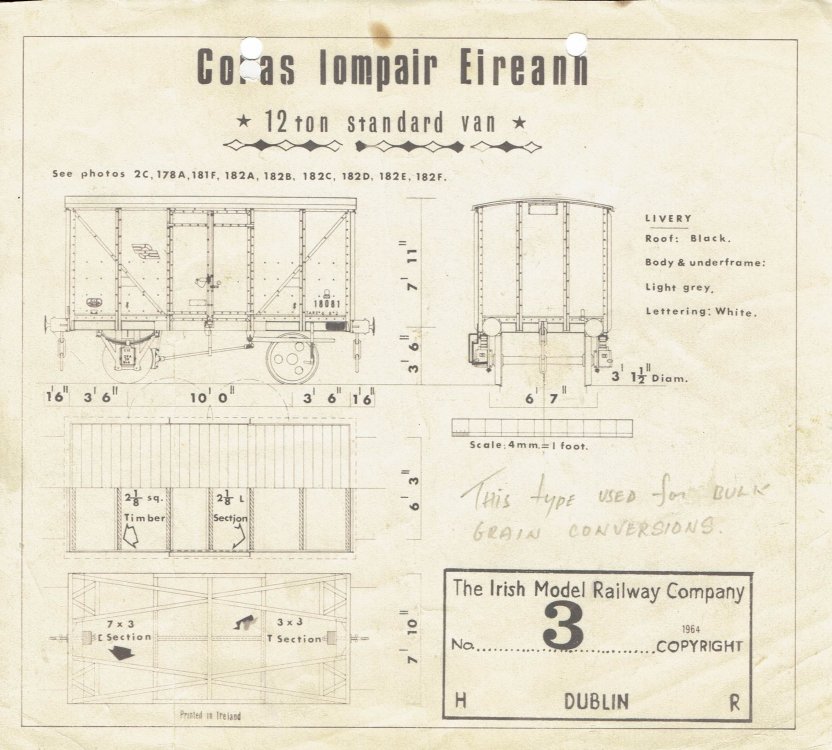

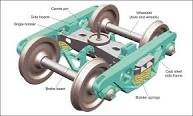

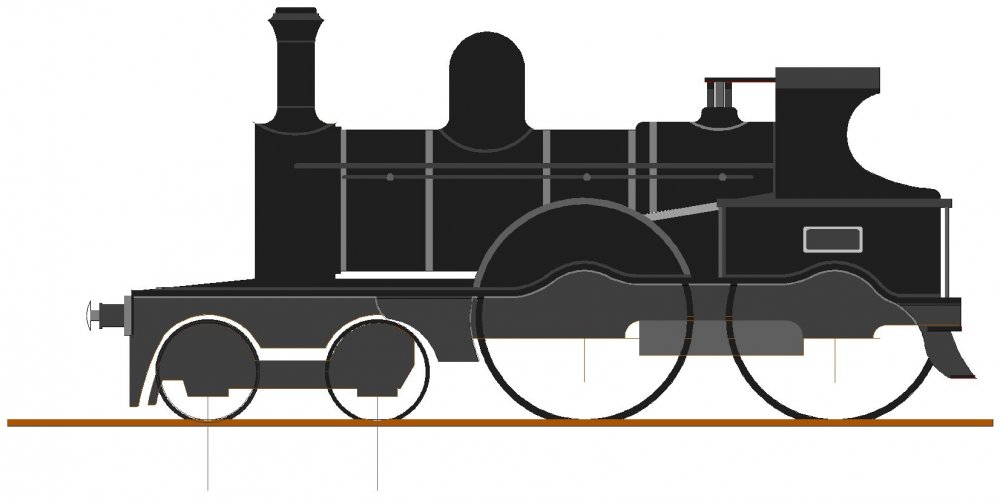

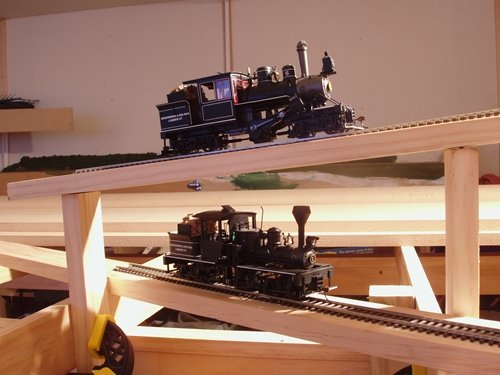
.png.0bad6664570e2a1ebb8aeab396b6f669.png)
